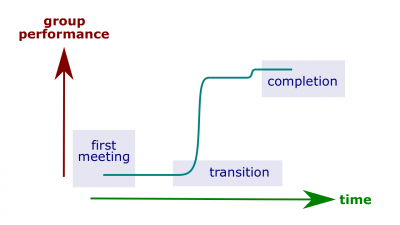Difference between revisions of "Punctuated-equilibrium model"
(→Related coursework) |
|||
| Line 8: | Line 8: | ||
*[[Punctuated equilibrium]]. The hypothesis that evolutionary development is marked by isolated episodes of rapid speciation between long periods of little or no change. | *[[Punctuated equilibrium]]. The hypothesis that evolutionary development is marked by isolated episodes of rapid speciation between long periods of little or no change. | ||
| − | ==Related | + | ==Related lectures== |
*[[Social Rationale Quarter]]. | *[[Social Rationale Quarter]]. | ||
[[Category: Septem Artes Administrativi]][[Category: Articles]] | [[Category: Septem Artes Administrativi]][[Category: Articles]] | ||
Latest revision as of 17:14, 4 January 2019
Punctuated-equilibrium model (hereinafter, the Model) is a set of phases that temporary groups go through that involves transitions between inertia and activity.
Definitions
According to Organizational Behavior by Robbins and Judge (17th edition),
- Punctuated-equilibrium model. A set of phases that temporary groups go through that involves transitions between inertia and activity.
Related concepts
- Punctuated equilibrium. The hypothesis that evolutionary development is marked by isolated episodes of rapid speciation between long periods of little or no change.
